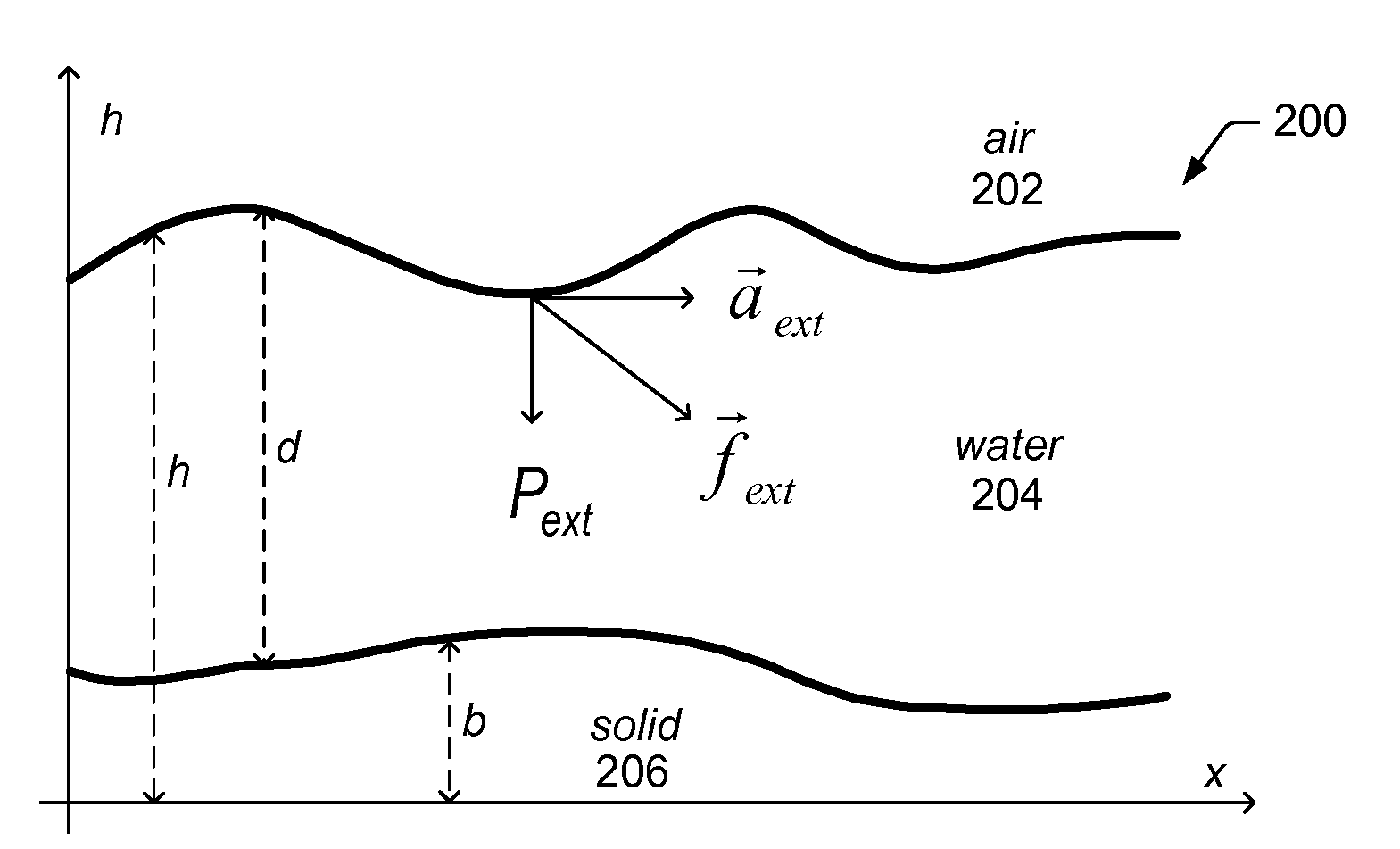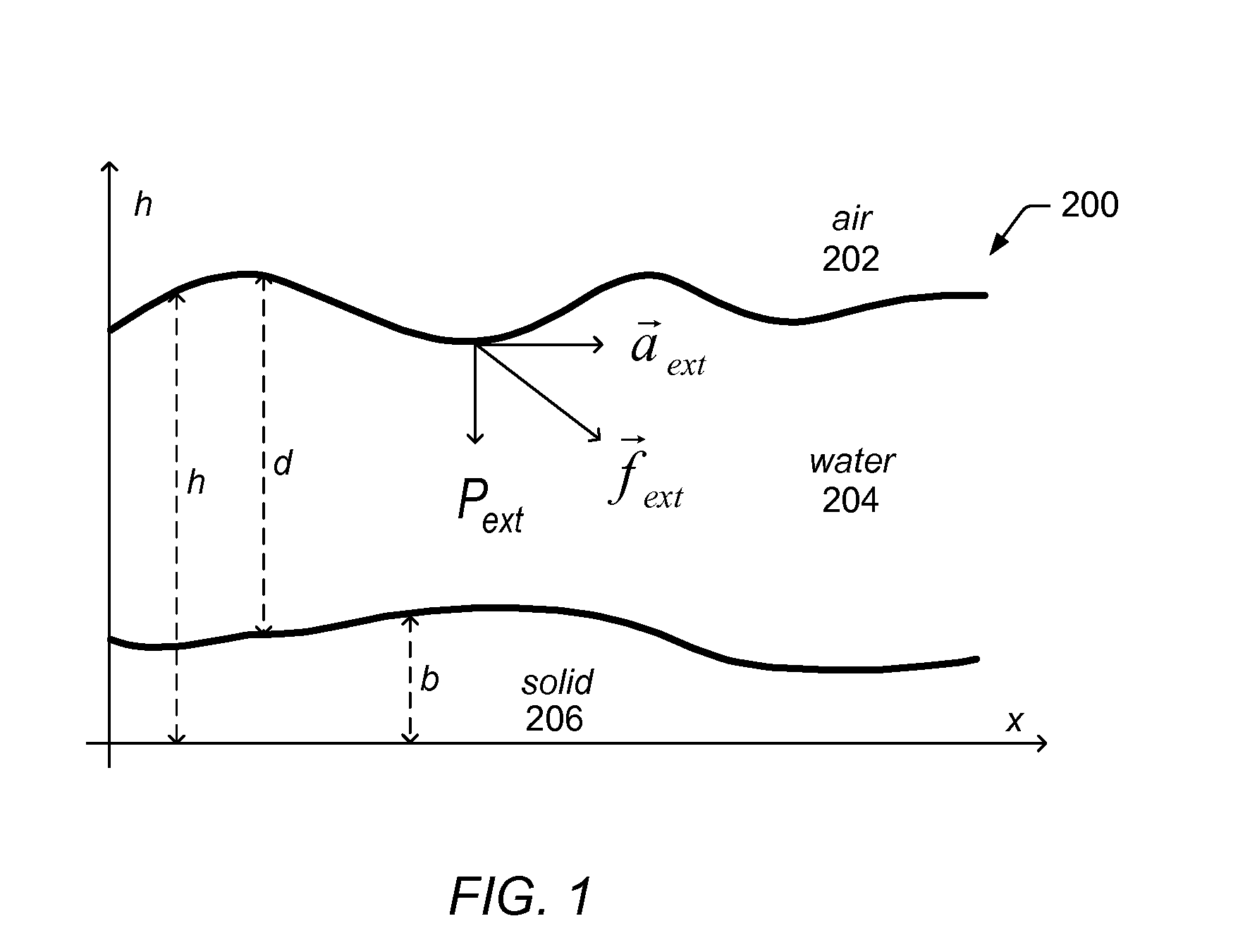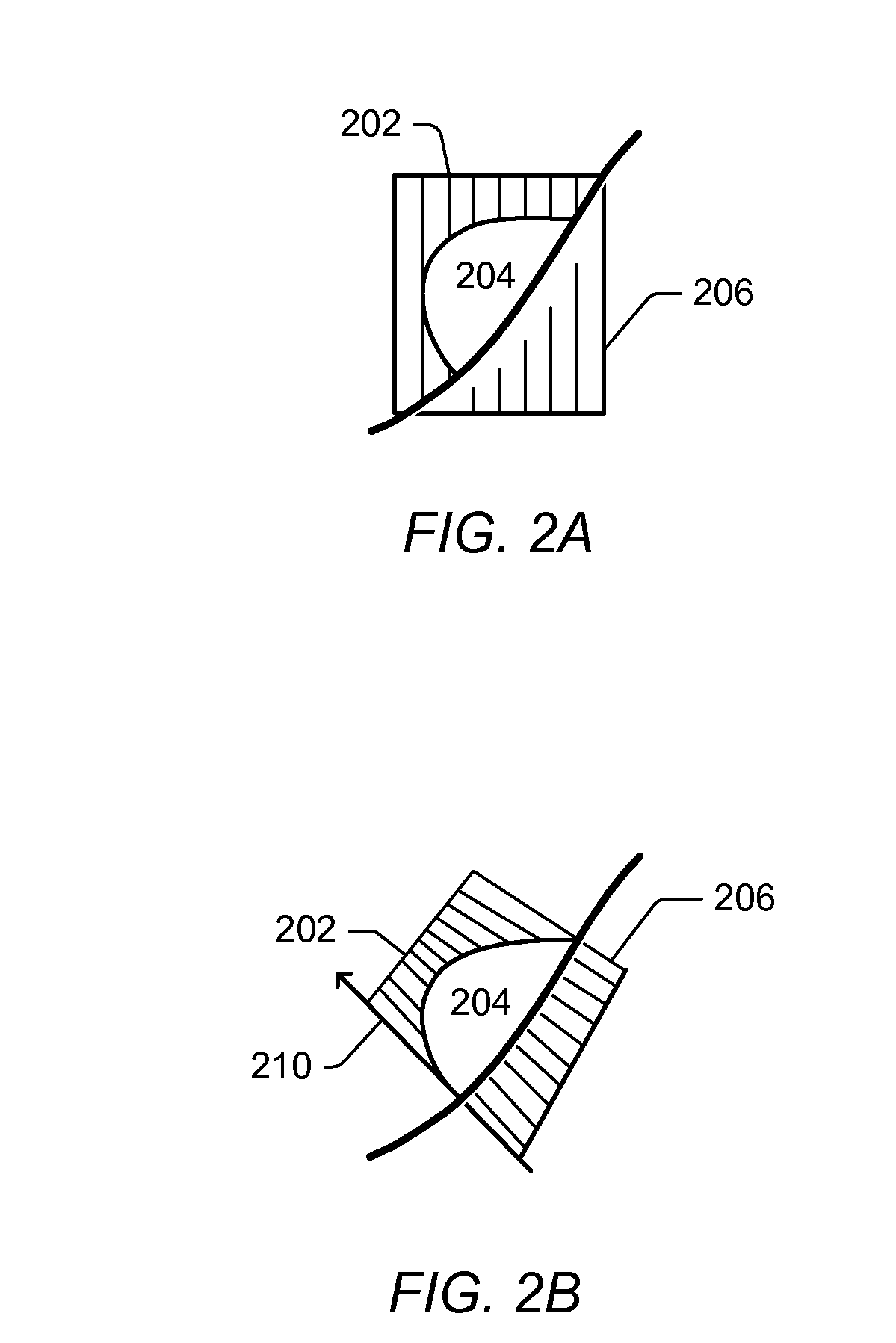System and Method for Simulating Shallow Water Effects on Arbitrary Surfaces
a shallow water effect and surface technology, applied in the field of computer systems, can solve the problems of insufficiently addressed interaction between solid surfaces and small-scale fluid dynamics, fast and accurate technique to simulate small-scale fluid dynamics, etc., and achieve the effect of facilitating real-time fluid control and shape design, and efficient simulation
- Summary
- Abstract
- Description
- Claims
- Application Information
AI Technical Summary
Benefits of technology
Problems solved by technology
Method used
Image
Examples
Embodiment Construction
General Shallow Wave Equations
[0027]Water behavior may be drastically different depending on the scale. For example, the effects of gravity largely dominate large-scale water phenomena. However, small-scale water behavior may be dominated by surface tension or other forces. These forces may affect both wave velocity with respect to frequency and shape form in equilibrium. For example, large-scale liquid equilibrium shapes may be flat, whereas small-scale equilibrium shapes may form droplets of high curvature. Simulating fluid motion in a manner that takes surface tension effects into account may result in more natural-looking water effects than those possible in simulators that do not include them. A system and method that includes these effects efficiently may be efficient enough to render realistic looking shallow water effects in real time, in some embodiments.
[0028]A shallow water simulation system and method is provided that extends traditional Shallow Wave Equations (SWE) to n...
PUM
 Login to View More
Login to View More Abstract
Description
Claims
Application Information
 Login to View More
Login to View More - R&D
- Intellectual Property
- Life Sciences
- Materials
- Tech Scout
- Unparalleled Data Quality
- Higher Quality Content
- 60% Fewer Hallucinations
Browse by: Latest US Patents, China's latest patents, Technical Efficacy Thesaurus, Application Domain, Technology Topic, Popular Technical Reports.
© 2025 PatSnap. All rights reserved.Legal|Privacy policy|Modern Slavery Act Transparency Statement|Sitemap|About US| Contact US: help@patsnap.com



